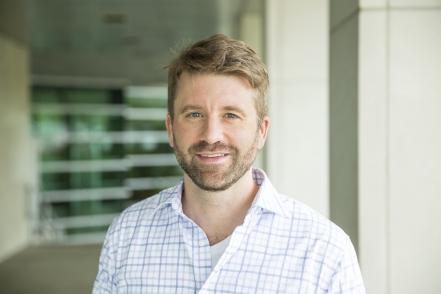Research led by Michigan State University helps reveal why getting to school can be particularly difficult for students in Detroit.
As one of the nation’s largest markets for school choice, less than a quarter of the city’s students attend the school nearest to their home, according to the study. Further, one out of every five students leaves Detroit entirely.
The report, released today by the Urban Institute, is part of a larger study analyzing student transportation patterns in five large U.S. cities.
“Our work b rings more attention to the connections between the school choices available to families and how those decisions affect their commutes on a daily basis,” said Joshua Cowen, associate professor at MSU and a member of the national research team. He is the lead author of the report focused on Detroit, where nearly half of all schoolchildren attend charter schools.
rings more attention to the connections between the school choices available to families and how those decisions affect their commutes on a daily basis,” said Joshua Cowen, associate professor at MSU and a member of the national research team. He is the lead author of the report focused on Detroit, where nearly half of all schoolchildren attend charter schools.
While other studies have evaluated school choice by demographics in Detroit, Cowen and his co-authors have conducted a more in-depth analysis—focusing on students in grades three, six and nine—from the U.S. Census, the Michigan Department of Education and the state’s Center for Educational Performance and Information. They also are the first to track student transit beyond city lines.
Over three-quarters of the high-quality schools, identified based on factors of academic accountability, absence and graduation rates, that Detroit residents attend are not inside the city, the researchers found.
Students who are city residents spend, on average, seven to 12 minutes traveling to school. Travel times are generally farther for third- and sixth-grade students who choose charter schools, and for Black and Hispanic students compared to students who are white or Asian American. Asian American and white students, however, are much more likely to attend school outside the city.
“We can see that, at least measured by travel time to different school options, school access is still more limited for students of color and low-income students in Detroit, even though they make up the majority of the population,” said Cowen, faculty co-director of the Education Policy Innovation Collaborative (EPIC) at MSU. “The solutions involve helping students overcome the barriers to get to their schools of choice, but also taking steps to improve the quality of education available to kids in their own neighborhoods.”
Cowen’s co-authors include MSU doctoral students Danielle Sanderson Edwards and Missy Cosby, and Carolyn Sattin-Bajaj of Seton Hall University.
Visit the Urban Institute website to read more school transportation research, including the full report from Cowen, and to view a city-by-city interactive map.




